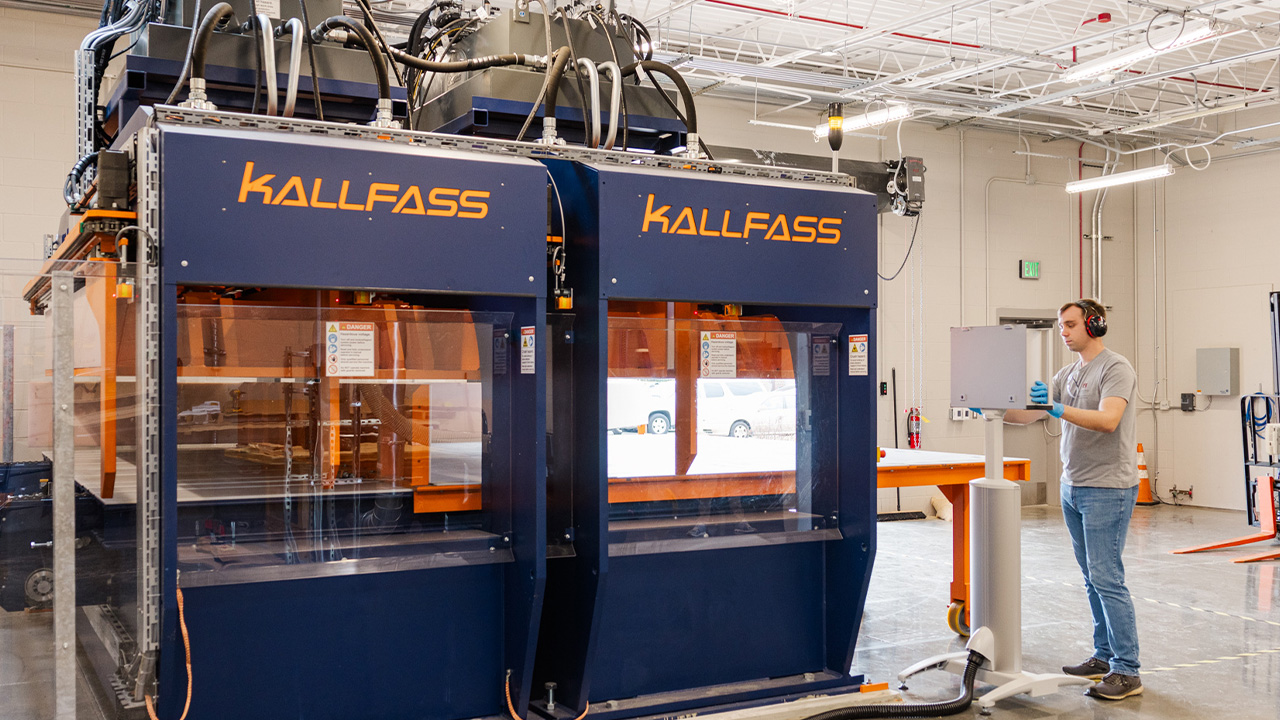content body
Ask any member of the Auburn Mass Timber Collaborative (AMTC) what they think of the university’s newest tool, and you’ll hear nothing but enthusiasm.
“I was very excited when I heard we were getting a cross-laminated timber (CLT) press,” said Brian Via, the Regions Professor of forest products. “Getting this press opens up new avenues for grants and funding and allows us to research mass timber on a much larger scale.”
Mass timber is a rapidly growing technology used in the design and construction fields, and the AMTC is becoming a leader in mass timber research, teaching and outreach in the Southeast. Now that the team has acquired a tool to manufacture its own CLT, faculty can do more research without having to leave campus or depend on outside partners.
Auburn is the only academic institution in the Southeast and one of fewer than a dozen nationally to own a CLT press. Now, Auburn faculty across multiple disciplines can complete the cycle of mass timber production from start to finish — from sapling to shelter.
The AMTC is made up of researchers from:
-
The College of Forestry, Wildlife and Engineering (CFWE), where faculty are studying the growing and harvesting of trees for mass timber products, as well as the creation and testing of formulas for adhesives used to glue timber together;
-
The College of Architecture, Design and Construction (CADC), where faculty are researching best practices for designing with mass timber and for transporting and assembling mass timber products on construction sites; and
-
The Samuel Ginn College of Engineering, where faculty test the structural strength of mass timber in the Advanced Structural Engineering Laboratory (ASEL).
When paired with the ASEL facility, the CLT press enables Auburn’s research teams to quickly move mass timber research from the lab to building full-scale mockups and testing in a very short time frame.
Via, who studies ways to replace petroleum in adhesives with organic materials like soy flour, holds patents for several different adhesive formulas. He does small-scale testing in his lab to assess the strength of his formulas and screen them for effectiveness. He hopes to eventually promote and market his products, but to do that, he’ll need to test them on a larger scale.
Staff members in CADC's research shop manufacture cross-laminated timber, which is then tested for strength at ASEL.
With the addition of the CLT press on campus, now he can.
“Having the CLT press on campus allows us to approach a manufacturing facility with large-scale data in hand,” he said. “We can see if the small-scale testing we do in the wood lab is replicated at a larger scale in ASEL, and we’re about to see how well that translates.”
The CLT press is located in the shop at CADC’s Research Commons in Auburn’s Research Park. If Via has a new adhesive he wants to try, or if David Roueche, Gottlieb Associate Professor in Engineering, needs to explore a unique strategy for improving the structural performance of a CLT panel with a quick strength test, they can contact the Research Shop. The staff there will quickly manufacture the necessary mass timber products and send them across campus to ASEL for additional testing within days.
While research is an important focus of the AMTC, so are teaching and outreach. With a CLT press on campus, students can see mass timber products manufactured right in front of them, making it easier to understand the mass timber production chain. It also increases opportunities for undergraduate and graduate student research on campus.
And when architects, foresters, construction managers and engineers visit campus, a demonstration of the CLT press can make a major impact on their understanding of the design and construction potentials of this material.
Given that roughly 70% of Alabama is forested and forestry is one of the state’s largest industries, Auburn’s leadership in this area is vital. David Hinson, CADC’s associate dean for research and graduate studies, said he’s grateful for the support of the Alabama legislature, whose members appropriated funding for the CLT press when they heard how AMTC’s research can benefit the state economically.
“We wouldn’t have been able to do this without the state legislature,” Hinson said. “They see value in this investment because our research can help expand the market for trees we grow here in Alabama, and there’s a big economic opportunity in terms of developing the supply chain.
“It’s not just about increasing the value of standing timber, it’s also about growing an industrial workforce.”
Like his colleagues, Hinson is excited about the increased research capabilities of the AMTC, but he said the CLT press is just one of many reasons Auburn is a leader in this field.
“We have ASEL’s testing capability, the Forest Products Development Center and the Robins & Morton Construction Field Lab,” he said. “Adding the CLT press to our mass timber research toolbox really enhances our ability to grow our research and teaching activities and advance our mission of supporting economic development in Alabama and across the South.”
Want to learn more about mass timber research, teaching and outreach at Auburn?
Visit the Auburn Mass Timber Collaborative









